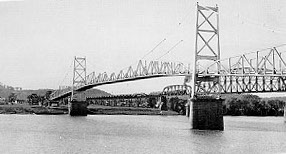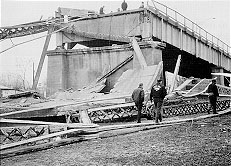


Very interesting that he had this:
“The National Bridge Inventory contains a report on this bridge from 2003. It reports the following items:
Deck Condition: Fair.
Superstructure Condition: Poor.
Substructure Condition: Satisfactory.
Scour: Foundations determined to be stable.
Bridge Railings: Meets currently acceptable standards.
Structural Evaluation: Meets minimum tolerable limits to be left in place as-is.
Water Adequacy Evaluation: Superior to present desirable criteria.
Bridge Sufficiency Rating: 50%
A University of Minnesota Civil Engineer in a report to MN-DOT recently noted that this bridge is considered to be a non-redundant structure. That is, if any one member fails, the entire bridge can collapse. A key factor is that there are only four pylons holding up the arch. Any damage to any one pylon would be catastropic. The textbook example of a non-redundant bridge is the Silver Bridge over the Ohio River. It failed shortly before Christmas in 1967 resulting in 46 deaths. A single piece of hardware failed due to a tiny manufacturing defect. But that piece was non-redundant, and the entire bridge collapsed into the icy river. Today, bridge engineers design bridges so that any single piece of the bridge can fail without causing the entire bridge to collapse. It is tragic that the I-35W bridge was built a few years too early to benefit from that lesson.”
It looked to me that this is exactly what happened. Only time will tell for sure.



If I were to guess, I bet it is a superstructure failure at a relatively secondary member. Cascade effect collapse starting at one end of the major span that once underway pulls everything else in other spans away from vertical support stability and whammy, house of cards.